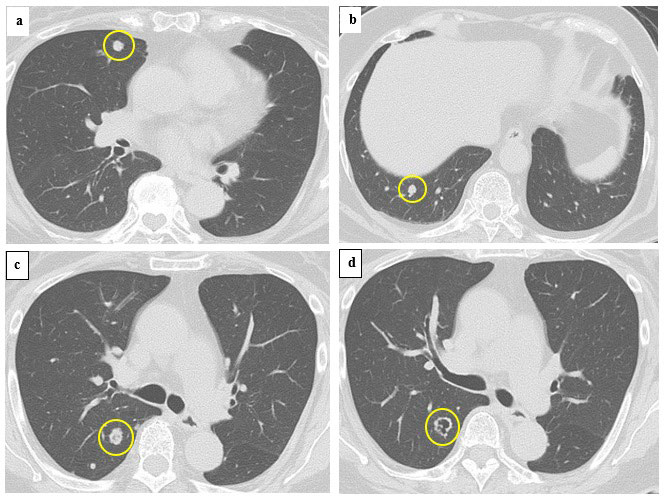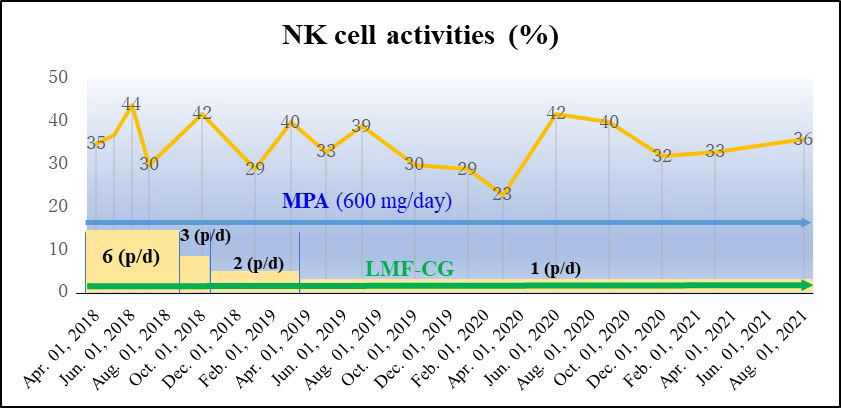1. Dendl K, Koerber SA, Finck R, et al. 68Ga-FAPI-PET/CT in patients with various gynecological malignancies. Eur J Nucl Med Mol Imaging. 2021; 48: 4089-4100. doi: 10.1007/s00259-021- 05378-0
2. Liu Y, Jin Y, Lu Y, et al. Comparison of the outcomes between laparoscopic surgery and conventional open surgery in treating patients with stage II endometrial carcinoma. Medicine. 2021; 100: 38. doi: 10.1097/MD.0000000000027148
3. Baiden-Amissah REM, Annibali D, Tuyaerts S, et al. Endometrial cancer molecular characterization: the key to identifying high-risk patients and defining guidelines for clinical decisionmaking? Cancers. 2021; 13: 3988. doi: 10.3390/cancers13163988
4. Kurra V, Krajewski KM, Jagannathan J, et al. Typical and atypical metastatic sites of recurrent endometrial carcinoma. Canc Imag. 2013; 13(1): 113-122. doi: 10.1102/1470-7330.2013.0011
5. Mandato VD, Mastrofilippo V, Palicelli A, et al. Solitary vulvar metastasis from early-stage endometrial cancer: Case report and literature review. Medicine. 2021; 100: 22(e25863). doi: 10.1097/MD.0000000000025863
6. Liu S, Yang J, Peng X, et al. The natural product fucoidan inhibits proliferation and induces apoptosis of human ovarian cancer cells: Focus on the PI3K/Akt signaling pathway. Cancer Manag Res. 2020; 12: 6195-6207. doi: 10.2147/CMAR.S254784
7. Mak W, Wang SK, Liu T, et al. Anti-proliferation potential and content of fucoidan extracted from sporophyll of New Zealand Undaria pinnatifida. Front Nutr. 2014; 1: Article 9, 1-10. doi: 10.3389/fnut.2014.00009
8. Aisa Y, Miyakawa Y, Nakazato T, et al. Fucoidan Induces apoptosis of human HS-Sultan cells accompanied by activation of caspase-3 and down-regulation of ERK pathways. Am J Hematol. 2005; 78: 7-14. doi: 10.1002/ajh.20182
9. Hyun J-H, Kim S-C, Kang J-I, et al. Apoptosis inducing activity of fucoidan in HCT-15 colon carcinoma. Cells Biol Pharm Bull. 2009; 32(10): 1760-1764. doi: 10.1248/bpb.32.1760
10. Park HS, Kim G-Y, Nam T-J, et al. Antiproliferative activity of fucoidan was associated with the induction of apoptosis and autophagy in AGS human gastric cancer cells. J Food Sci. 2011; 76, Nr. 3: T77-T83. doi: 10.1111/j.1750-3841.2011.02099.x
11. Yamasaki Y, Yamasaki M, Tachibana H, et al. Important role of β1-integrin in fucoidan-induced apoptosis via caspase-8 activation. Biosci Biotechnol Biochem. 2012; 76 (6): 1163-1168. doi: 10.1271/bbb.111001
12. Atashrazm F, Lowenthal RM, Woods GM, et al. Fucoidan suppresses the growth of human acute promyelocytic leukemia cells in vitro and in vivo. J Cell. Physiol. 2016; 231: 688-697. doi: 10.1002/jcp.25119
13. Shen J, Li J, Yu P, et al. Research status and hotspots of anticancer natural products based on the patent literature and scientific articles. Front Pharmacol. 2022; 13: 903239. doi: 10.3389/ fphar.2022.903239
14. Bobiński M, Okła K, Bednarek W, et al. The effect of fucoidan, a potential new, natural, anti-neoplastic agent on uterine sarcomas and carcinosarcoma cell lines: ENITEC Collaborative Study. Arch Immunol Ther Exp (Warsz). 2019; 67: 125-131. doi: 10.1007/s00005-019-00534-9
15. Zhang Z, Teruya K, Yoshida T, et al. Fucoidan extract enhances the anti-cancer activity of chemotherapeutic agents in MDA-MB-231 and MCF-7 breast cancer cells. Mar. Drugs. 2013; 11(1): 81-98. doi: 10.3390/md11010081
16. Zhang J, Riby JE, Conde L, et al. A fucus vesiculosus extract inhibits estrogen receptor activation and induces cell death in female cancer cell lines. BMC Complement Altern Med. 2016; 16: 151. doi: 10.1186/s12906-016-1129-6
17. Hsu H-Y, Lin T-Y, Lu M-K, et al. Fucoidan induces toll-like receptor 4-regulated reactive oxygen species and promotes endoplasmic reticulum stress-media1ted apoptosis in lung cancer. Sci Rep. 2017; 7: 44990. doi: 10.1038/srep44990
18. Teruya K, Kusumoto Y, Eto H, et al. Selective suppression of cell growth and programmed cell death-ligand 1 expression in HT1080 fibrosarcoma cells by low molecular weight fucoidan extract. Mar Drugs. 2019; 17: 421. doi: 10.3390/md17070421
19. Mio H. A case of postoperative recurrent breast cancer with multiple lung metastases that completely responded to combination therapy of docetaxel (TXT) and medroxyprogesterone acetate (MPA) [In Japanese]. Jpn J Cancer Chemother. 2003; 30(7): 985-988.
20. Verma MK., Miki Y, Sasano H. Sex steroid receptors in human lung diseases. J Steroid Biochem Mol Bio. 2011; 127: 216-222. doi: 10.1016/j.jsbmb.2011.07.013
21. Reis FM, Coutinho LM, Vannuccini S, Batteux F, et al. Progesterone receptor ligands for the treatment of endometriosis: The mechanisms behind therapeutic success and failure. Hum Reprod Update. 2020; 26(4): 565-585. doi: 10.1093/humupd/dmaa009
22. Fedotcheva TA. Clinical use of progestins and their mechanisms of action: Present and future (Review). Sovrem Tehnologii Med. 2021; 13(1): 93. doi: 10.17691/stm2021.13.1.11
23. Mikuła Pietrasik J, Witucka A, Pakuła M, et al. Comprehensive review on how platinum and taxane based chemotherapy of ovarian cancer affects biology of normal cells. Cell Mol Life Sci. 2019; 76: 681-697. doi: 10.1007/s00018-018-2954-1
24. Ho MY, Mackey JR. Presentation and management of docetaxel-related adverse effects in patients with breast cancer. Cancer Manag Res. 2014; 6: 253-259. doi: 10.2147/CMAR.S40601
25. Gaughran G, Qayyum K, Smyth L, et al. Carboplatin and hypomagnesemia: Is it really a problem? Asia-Pac J Clin Oncol. 2020; 1-8. doi: 10.1111/ajco.13481
26. Numata T, Sato-Numata K, Okada Y. TRPM7 is involved in acid-induced necrotic cell death in a manner sensitive to progesterone in human cervical cancer cells. Physiol Rep. 2019; 7(13): e14157. doi: 10.14814/phy2.14157
27. Citkowska A, Szekalska M, Winnicka K. Possibilities of fucoidan utilization in the development of pharmaceutical dosage forms. Mar Drugs. 2019; 17: 458. doi: 10.3390/md17080458
28. Fitton JH, Stringer DN, Park AY, et al. Therapies from fucoidan: New developments. Mar Drugs. 2019; 17: 571. doi: 10.3390/md17100571
29. Zhang Z, Teruya K, Eto H, et al. Induction of apoptosis by low-molecular-weight fucoidan through calcium- and caspase-dependent mitochondrial pathways in MDA-MB-231 breast cancer cells. Biosci Biotechnol Biochem. 2013; 77(2): 235-242. doi: 10.1271/ bbb.120631
30. Takahashi H, Kawaguchi M, Kitamura K, et al. An exploratory study on the anti-inflammatory effects of fucoidan in relation to quality of life in advanced cancer patients. Integr Cancer Ther. 2018; 17(2): 282-291. doi: 10.1177/1534735417692097
31. Ye J, Li Y, Teruya K, et al. Enzyme-digested fucoidan extracts derived from seaweed Mozuku of Cladosiphon novae-caledoniae kylin inhibit invasion and angiogenesis of tumor cells. Cytotechnology. 2005; 47: 117-126. doi: 10.1007/s10616-005-3761-8
32. Coussens LM, Zitvoge L, Palucka AK. Neutralizing tumorpromoting chronic inflammation: A magic bullet? Science. 2013; 339: 286-291. doi: 10.1126/science.1232227
33. Bruchard M, Mignot G, Derangère V, et al. Chemotherapytriggered cathepsin B release in myeloid-derived suppressor cells activates the Nlrp3 inflammasome and promotes tumor growth. Nat Med. 2013; 19: 57-64. doi: 10.1038/nm.2999
34. Wagner G, Stollenwerk HK, Klerings I, et al. Efficacy and safety of immune checkpoint inhibitors in patients with advanced non– small cell lung cancer (NSCLC): A systematic literature review. Oncoimmunology. 2020; 9 (1): 1-16. doi: 10.1080/2162402X.2020.1774314
35. Brahmer JR, Drake CG, Wollner I, et al. Phase I study of single-agent anti–programmed death-1 (MDX-1106) in refractory solid tumors: Safety, clinical activity, pharmacodynamics, and immunologic correlates. J Clin Oncol. 2010; 28: 3167-3175. doi: 10.1200/JCO.2009.26.7609
36. Mahoney KM, Freeman GJ, McDermott DF. The next immunecheckpoint inhibitors: PD-1/PD-L1 blockade in melanoma. Clin Ther. 2015; 37(4): 764-782. doi: 10.1016/j.clinthera.2015.02.018
37. Su C, Wang H, Liu Y, et al. Adverse effects of anti-PD-1/ PD-L1 therapy in non-small cell lung cancer. Front Oncol. 2020; 10: 554313. doi: 10.3389/fonc.2020.554313
38. Shirahata S, Katakura Y, Teruya K, et al. Inventors. kit for inducing changes in sugar chain structure on the surface of cancer cells. Patent publication number: JP5201499B2. 2013.6.5.
39. Pinto NV, Cavada BS, Brito LF, et al. Effects of canavalia lectins on acute inflammation in sensitized and non-sensitized rats. Inflammation. 2013; 36(3): 713-722. doi: 10.1007/s10753-013- 9596-0
40. Yau T, Dan X, Ng CCW, et al. Lectins with potential for anticancer therapy. Molecules. 2015; 20: 3791-3810. doi: 10.3390/molecules20033791
41. Une S, Nonaka K, Akiyama J. Lectin isolated from Japanese red sword beans (Canavalia gladiata) as a potential cancer chemopreventive agent. J Food Sci. 2018; 83: Nr. 3. doi: 10.1111/17503841.14057
42. Li W-w, Yu J-y, Xu H-l et al. Concanavalin A: A potential antineoplastic agent targeting apoptosis, autophagy and anti-angiogenesis for cancer therapeutics. Biochem Biophys Res Commun. 2011; 414: 282-286. doi: 10.1016/j.bbrc. 2011.09.072
43.Chung H-J, Park C-J, Lim J-H, et al. Establishment of a reference interval for natural killer cell activity through flow cytometry and its clinical application in the diagnosis of hemophagocytic lymphohistiocytosis. Int Jnl Lab Hem. 2010; 32: 239-247. doi: 10.1111/j.1751-553X. 2009.01177.x
44. Hou H, Mao L, Wang J, et al. Establishing the reference intervals of NK cell functions in healthy adults. Hum Immunol. 2016; 77: 637-642. doi: 10.1016/j.humimm.2016.05.022
45. Zhang Z, Teruya K, Eto H, et al., Fucoidan extract induces apoptosis in MCF-7 cells via a mechanism involving the ROSdependent JNK activation and mitochondria-mediated pathways. PLoS One. 2011; 6(11): e27441. pii: e27441.
46. Zhang Z, Teruya K, Yoshida T, et al., Fucoidan extract enhances the anti-cancer activity of chemotherapeutic agents in MDA-MB-231 and MCF-7 breast cancer cells. Marine drugs. 2013 Jan 09;11(1): 81-98. doi: 10.3390/md11010081









